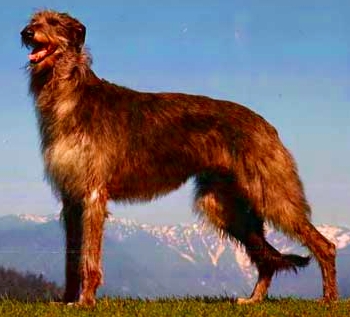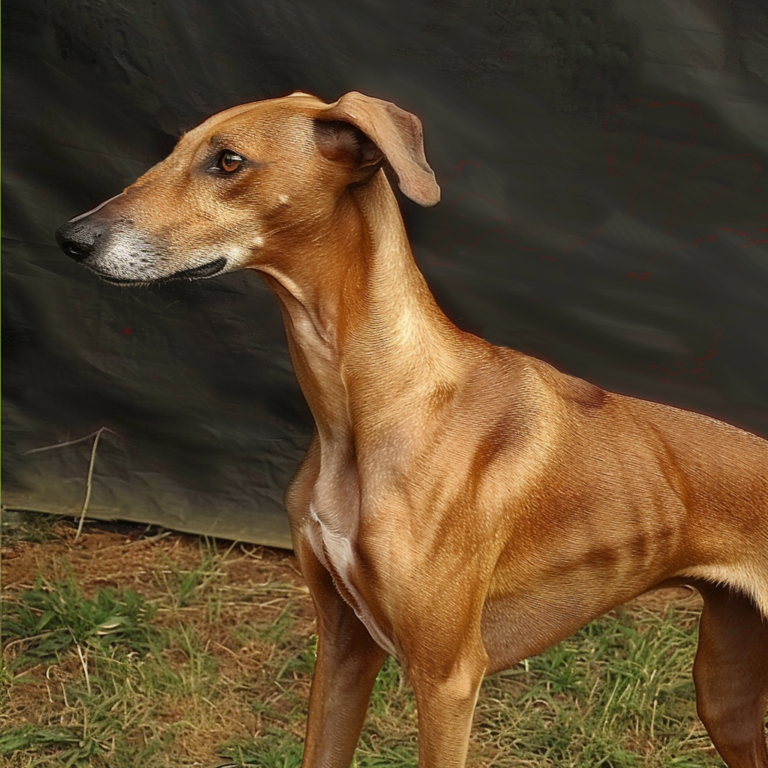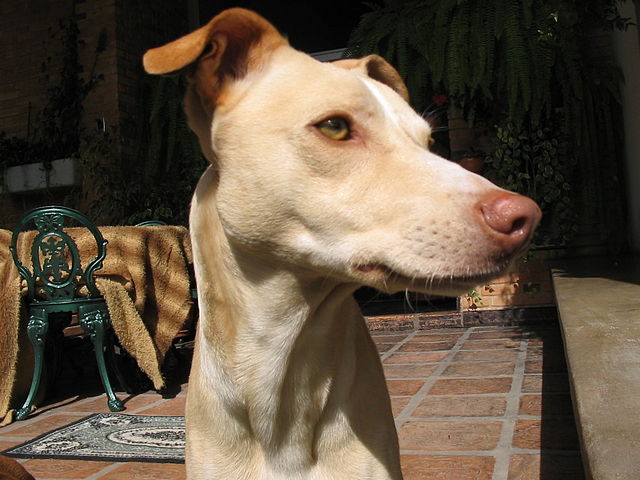The Scottish Deerhound has a regal appearance hiding underneath a coarse, wiry coat. Like other sighthounds, they are gentle and polite – good thing, because they are giant in size! Deerhounds are passive in nature and tend to be lovers, not fighters. They don’t tend to bark when people come to the door and are definitely not fit to be guard dogs. Their size might be a deterrent for a burglar, but they aren’t apt to react much to an actual break-in. They tend to be reserved around strangers and many won’t even bother to even get up when a friend or stranger comes to do the door. They get along fine with children as long as the kids aren’t rough.
Sighthounds in general can be more cat-like in nature and the Deerhound is no exception. One shouldn’t buy a Deerhound and expect it to play fetch in the yard, for example. When fully grown, they are prone to taking long naps throughout the day (although puppies have a bit more energy). They are quiet and generally unassuming. This is not a clumsy beast prone to knocking nick-nacks off the coffee table. Unlike other sighthounds, however – they tend to be a bit more affectionate and more likely to follow their owners around the house. It is for this reason that they make terrible choices for kennel dogs or outside-only dogs. They adore their people and must be near them often.
It is important to keep this breeds’ size in mind before committing to buy one. Scottish Deerhounds, with their long legs and stretching necks, are able to reach food on counters that other breeds are not. It’s easy for one to take a bite out of an eye-level batch of chicken set on the counter to cool! Training is helpful for this problem, although common sense is also good to have. Furthermore, their giant size means that they might not be able to fit in a compact car. Deerhound owners have been known to upgrade their vehicles in order to accommodate their dogs! Once one has done this, however, the owner will be able to have the company of the dog at any dog-friendly establishment. Deerhounds are great travelers.
Deerhounds need to have daily exercise – at least 30 minutes twice a day. A walk isn’t good enough as these hounds must be able to do some trotting. Therefore jogging or biking with the dog might be a better alternative. Furthermore, because this is a sprinting breed, they should also be given access to a safely fenced area to really gallop. If the Deerhound is able to free-run with another dog on a daily basis, the forced exercise might be able to be cut back to once a day. When sprinting in a yard, the fence must be at least 6 feet high because this breed has a very strong prey drive and will go after moving objects. Electric fences do not work for Deerhounds. One final note – as with all giant breeds, puppies should be gradually worked up to longer and longer distances when exercising on-leash to ensure the joints aren’t overstressed.
It has been said that Scottish Deerhounds have a different playing style than other breeds, which means that some dogs won’t be comfortable playing with them. Always supervise interactions with other dogs to make sure everyone is happy. Furthermore, know that Deerhounds can accidentally hurt a small or tiny dog because of the size difference or if their prey drive gets triggered. While they might live happily in the house with a Chihuahua or similar breed, it is safest not to let them outside in the yard together.
Originally coming from a cold country, Deerhounds don’t always fare well in hot weather. While they can live in Texas, they shouldn’t be forced to exercise in the hottest part of the day. Use common sense and don’t keep the dog outside for long hours when it’s 100 degrees outside. Deerhounds do best in air conditioning when they live in hotter areas of the country, preferably with plenty of access to soft dog beds.
Many adult Scottish Deerhounds don’t require formal obedience in order to be well-behaved in the house, although obedience is recommended for every dog in order to establish a bond, create a general sense of togetherness and to have fun! In particular, most Deerhounds don’t respond well to training which is super repetitious, nor do they respond well to force. Training should be fun and interesting. Many owners of Deerhound puppies want to start training early because… while most eventually mature enough to be great around the house, puppies can be destructive and benefit a lot from early training. Puppies tend to shred, dig and chew – all behaviors that can get better sooner with early training. Treat your Scottish Deerhound to hours of fun with a Benebone, perfect for keeping them entertained and giving them a safe option to chew on – https://amzn.to/410F5TG
Deerhounds don’t tend to shed very much which means that the dead hair needs to be thoroughly brushed out a few times a week. In addition, they need their ears cleaned, nails trimmed and teeth brushed regularly. A bath should be given every 1-2 months. All in all, this is not a high maintenance breed. When it comes to health, the biggest health issues to look out for include blood clotting disorders, bloat and heart issues. Always buy from a reputable breeder who works to breed healthy dogs.

Affiliate Disclaimer
As an Amazon Associate, I earn from qualifying purchases. This means that if you click on an affiliate link on this site and make a purchase, I may earn a small commission at no additional cost to you. Rest assured that I only link to products I have used, or use on a regular basis, and trust enough to recommend them to you!



